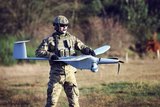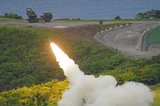Baltic nations advance BALTNET
The Lithuanian Ministry of Defence confirmed on 3 December that the scheduled re-structure of the Baltic Air Surveillance Network or BALTNET will see the activation of three national Control and Reporting Centres (CRC) in Estonia, Latvia and Lithuania.
The aim is to improve the capabilities and interoperability of NATO’s Integrated Air and Missile Defence System in the region to help safeguard Allied airspace.
The three countries have launched the BALTNET future configuration project to further enhance their air surveillance and control capabilities in the region and their contribution to NATO’s collective defence effort and architecture.
‘By establishing a CRC in each of our three countries, we achieve a joint and combined capable network. The individual functional units will eventually provide a more robust package for the region. We are confident and proud that this will markedly increase our capabilities especially as we contribute to controlling NATO aircraft in support of the Alliance’s Baltic Air Policing mission,' said Maj Tõnis Pärn, senior Estonian officer at Baltic CRC Karmelava, one of the stakeholders in the project.
The final concept foresees the establishment of three identical CRCs in Tallinn, Lielvarde and Karmelava tailored to national airspace surveillance. The system will allow assigning fighter controllers to Allied flying assets on a rotational basis among the three CRCs and enhance the data exchange with NATO’s Combined Air Operations Centre (CAOC) at Uedem, Germany and other entities of the Alliance.
‘With back-up capable regional air surveillance and control capability we are heading to provide better survivability, enhanced opportunities for future peacetime and defensive operations. At the same time advanced structures imply complexity and more responsibility that we will ensure through enhanced regional cooperation,’ Col Dainius Guzas, Commander of Lithuanian Air Forces said.
The BALTNET co-operation project was launched in 1998 as a system for acquisition, coordination, distribution and display of air surveillance data within the three Baltic states. Its objectives encompass international co-operation between civilian and military air traffic authorities and the development of the respective functions in all participating states. As such, BALTNET was a major stepping stone for helping the three countries to contribute to and to integrate with NATO structures.
More from Defence Notes
-
![Taiwan approved for purchase of $11 billion in weapons from US]()
Taiwan approved for purchase of $11 billion in weapons from US
The US State Department’s approval of a multi-billion-dollar sale of weapons to Taiwan includes tactical mission networks equipment, uncrewed aerial systems, artillery rocket systems and self-propelled howitzers as well as anti-tank guided missiles.
-
![Ireland spells out $2.3 billion shopping list in five-year defence spending plan]()
Ireland spells out $2.3 billion shopping list in five-year defence spending plan
Ireland’s multi-annual investment in capital defence spending is set to rise from €300m in 2026 to €360m in 2029–2030 with major upgrades across land, air, maritime and cyber domains.
-
![US National Security Strategy prioritises advanced military capabilities and national industry]()
US National Security Strategy prioritises advanced military capabilities and national industry
The 2025 NSS has emphasised investment in the US nuclear and air defence inventory and national industry, but it leaves multiple unanswered questions on how the White House will implement this approach.
-
![Canada set to look away from its neighbour and across the Atlantic for partners]()
Canada set to look away from its neighbour and across the Atlantic for partners
While non-EU UK struggles to join the Security Action for Europe initiative, which provides loans for defence programmes, Canada has become the first country outside Europe to get access – and did so for a nominal fee.
-
![NATO experiments with solutions to integrate networks, AI and uncrewed systems]()
NATO experiments with solutions to integrate networks, AI and uncrewed systems
During the latest edition of the NATO DiBaX, the alliance tested multiple capabilities to inform requirements for future efforts.

























